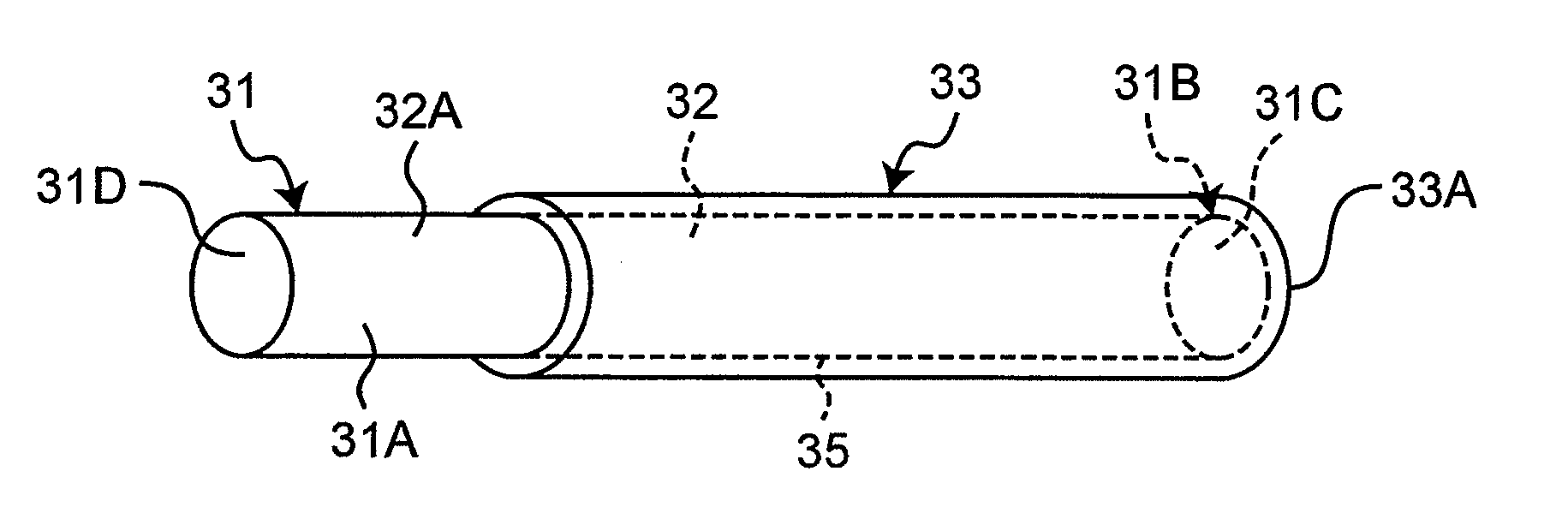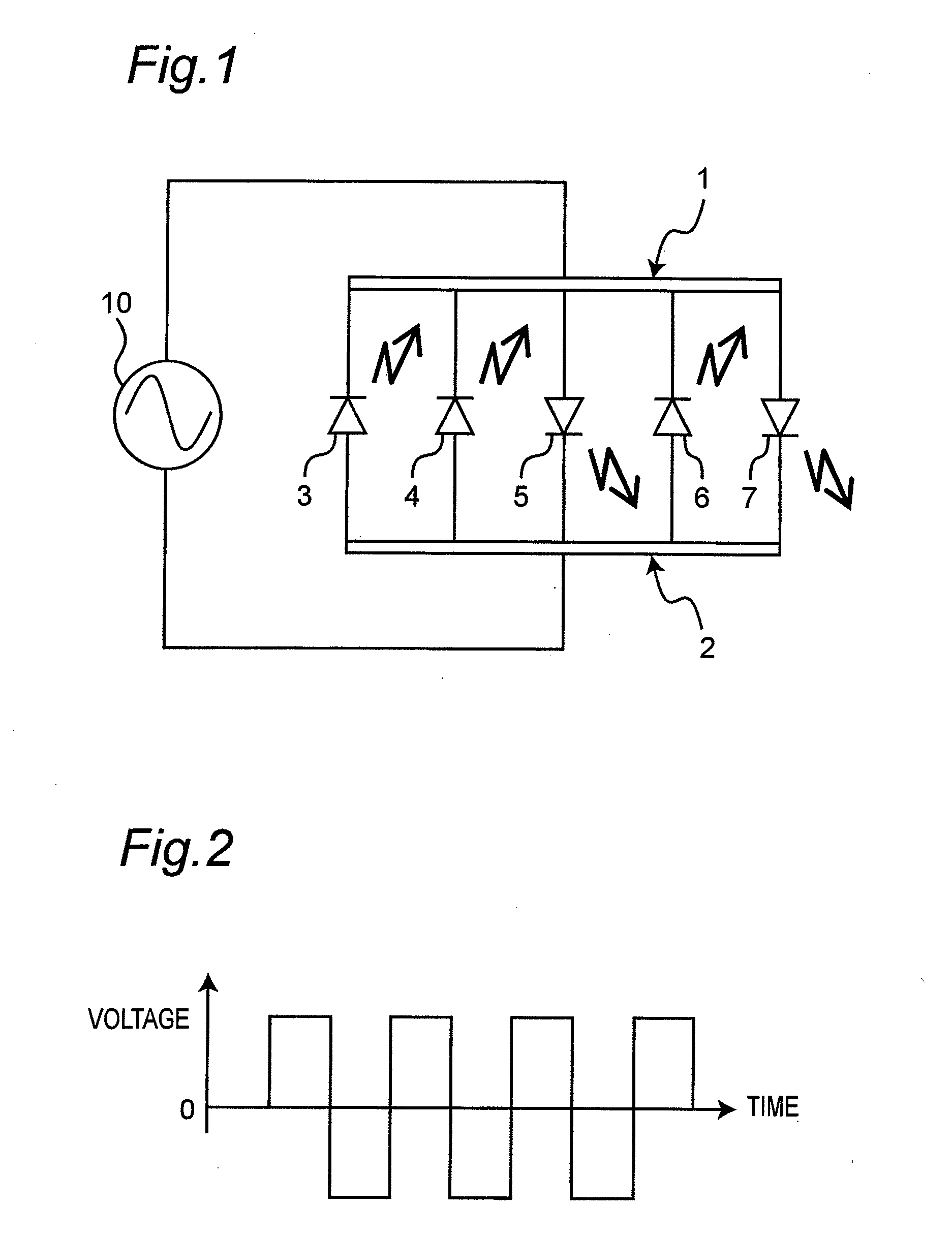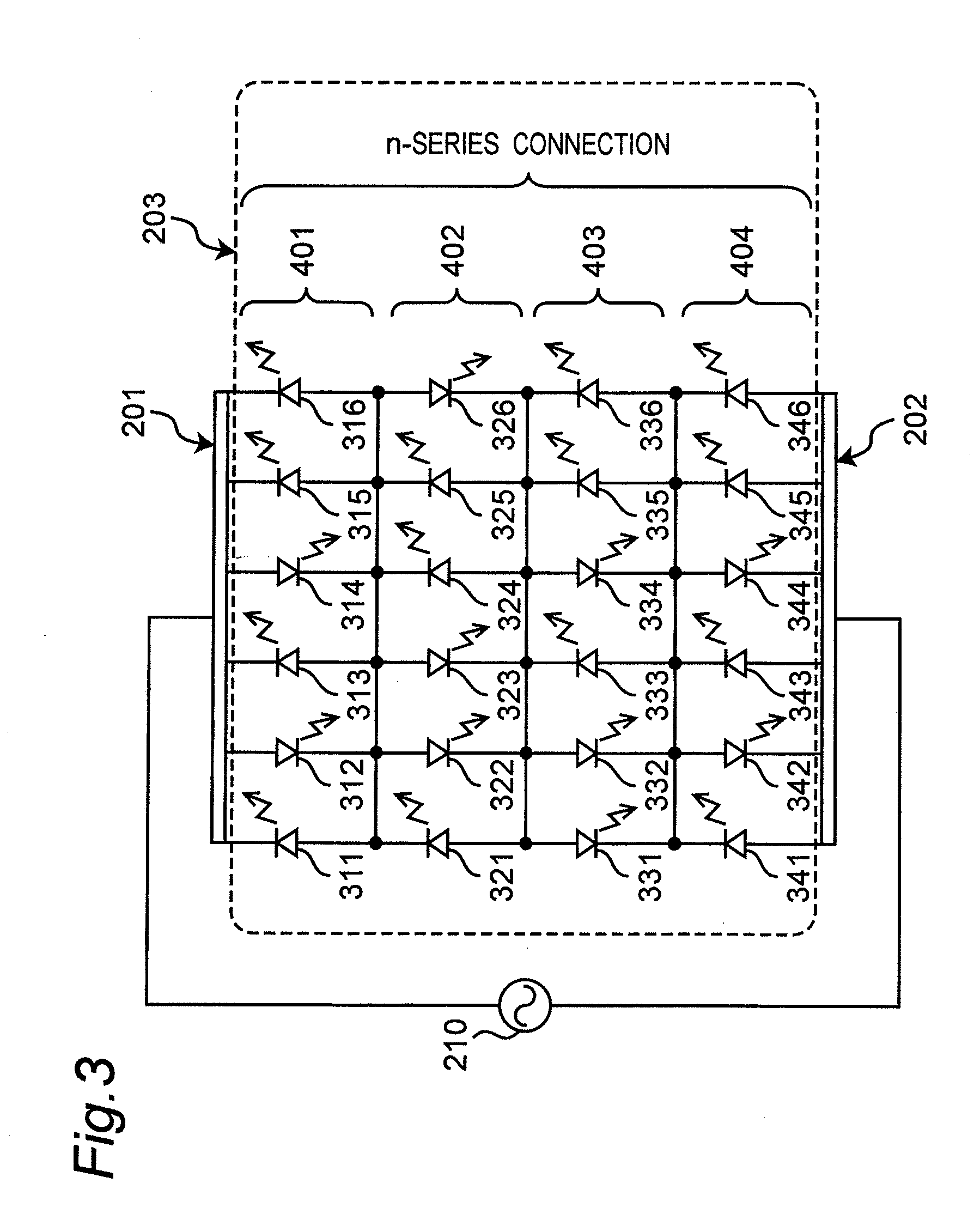Light emitting device and manufacturing method therefor
a technology of light emitting diodes and manufacturing methods, which is applied in semiconductor devices, electric lighting sources, electric light sources, etc., can solve the problems of high manufacturing cost and difficulty in manufacturing itself, and achieve the effect of reducing manufacturing costs and simplifying the manufacturing process
- Summary
- Abstract
- Description
- Claims
- Application Information
AI Technical Summary
Benefits of technology
Problems solved by technology
Method used
Image
Examples
first embodiment
[0134]FIG. 1 schematically shows an electric circuit structure of a first embodiment of a light emitting device according to the present invention. The light emitting device of this first embodiment includes a first electrode 1 and a second electrode 2, and five light emitting diodes 3-7 connected in parallel between the first electrode 1 and the second electrode 2. The light emitting diodes 3, 4, 6 are each a second light emitting diode whose cathode is connected to the first electrode 1 and whose anode is connected to the second electrode 2. Meanwhile, the light emitting diodes 5, 7 are each a first light emitting diode whose anode is connected to the first electrode 1 and whose cathode is connected to the second electrode 2. An AC power supply 10 is connected to the first electrode 1 and the second electrode 2, and the AC power supply 10 applies AC voltage to the first electrode 1 and the second electrode 2. In this embodiment, the frequency of the AC voltage by the AC power supp...
second embodiment
[0144]Next, a second embodiment of the light emitting device according to the invention will be described with reference to FIG. 3. FIG. 3 is a circuit diagram schematically showing an electric circuit structure of the second embodiment.
[0145]FIG. 3 schematically shows the electric circuit structure of the second embodiment of the light emitting device according to the invention. The light emitting device of this second embodiment includes a first electrode 201 and a second electrode 202, and a light emitting diode circuit 203 composed of twenty-four light emitting diodes 311-316, 321-326, 331-336, 341-346 connected in series and parallel between the first electrode 201 and the second electrode 202.
[0146]The six light emitting diodes 311-316 are connected in parallel to form a parallel structure unit 401. Likewise, the six light emitting diodes 321-326, the six light emitting diodes 331-336 and the six light emitting diodes 341-346 also form parallel structure units 402, 403, 404, r...
third embodiment
[0165]Next, a third embodiment of the light emitting device according to the invention will be described with reference to FIG. 7. FIG. 7 is a schematic plan view showing the third embodiment.
[0166]The light emitting device of this third embodiment includes a substrate 21, a first electrode 22 formed on the substrate 21, a second electrode 23 formed on the substrate 21, and four light emitting diodes 24, 25, 26, 27. These first electrode 22 and the second electrode 23 extend generally parallel to each other along a surface 21A of the substrate 21 and are opposed to each other. The first electrode 22 has four protruding portions 22A, 22B, 22C, 22D which are positioned in parallel to one another with a certain interval along the extending direction of the first electrode 22 and which protrude toward the second electrode 23. Also, the second electrode 23 has four protruding portions 23A, 23B, 23C, 23D which are positioned in parallel to one another with a certain interval along the ext...
PUM
 Login to View More
Login to View More Abstract
Description
Claims
Application Information
 Login to View More
Login to View More - R&D
- Intellectual Property
- Life Sciences
- Materials
- Tech Scout
- Unparalleled Data Quality
- Higher Quality Content
- 60% Fewer Hallucinations
Browse by: Latest US Patents, China's latest patents, Technical Efficacy Thesaurus, Application Domain, Technology Topic, Popular Technical Reports.
© 2025 PatSnap. All rights reserved.Legal|Privacy policy|Modern Slavery Act Transparency Statement|Sitemap|About US| Contact US: help@patsnap.com



